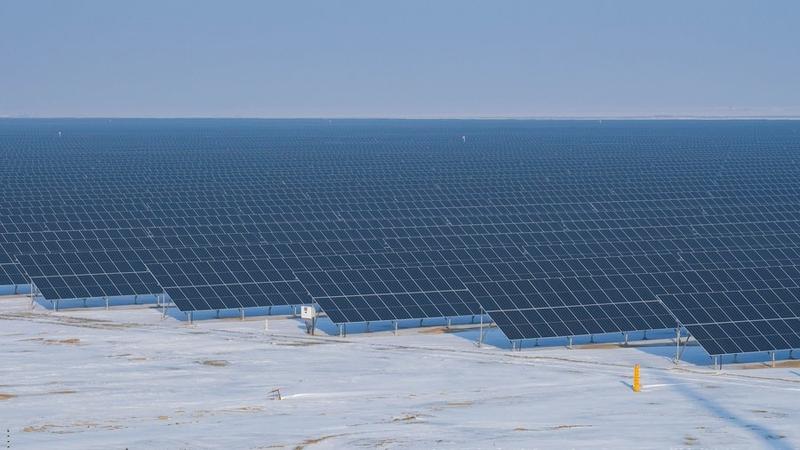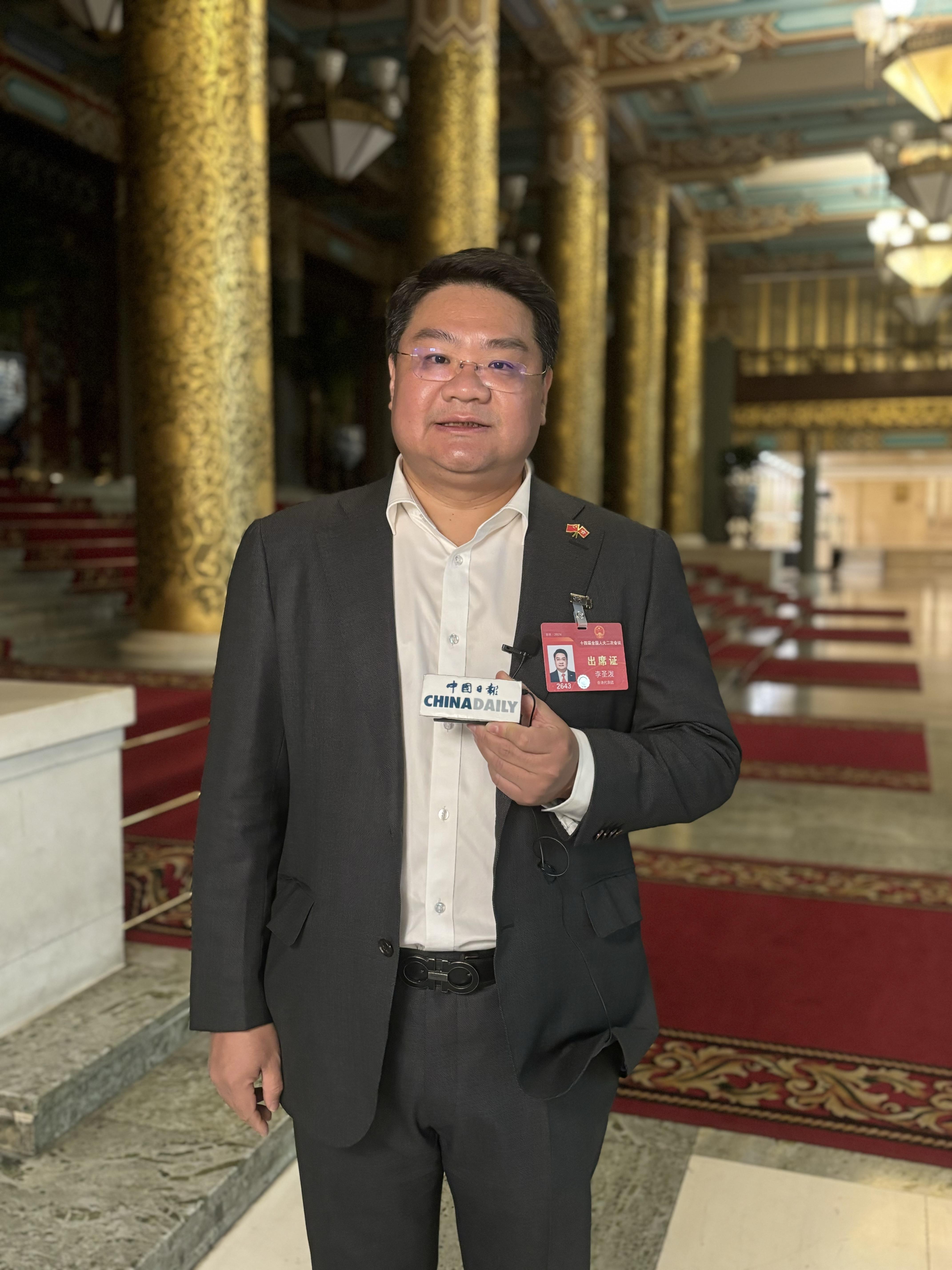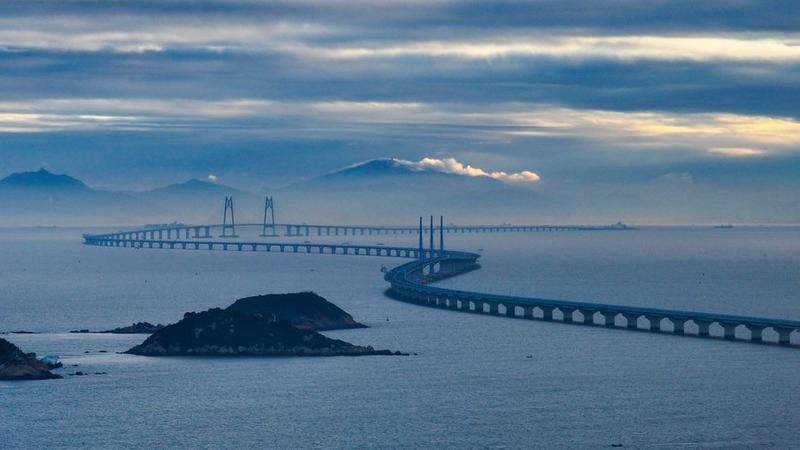 This photo dated Dec 20, 2023 shows a photovoltaic power project in Kazak autonomous county of Mori, Changji Hui autonomous prefecture, northwest China's Xinjiang Uygur autonomous region. (PHOTO / XINHUA)
This photo dated Dec 20, 2023 shows a photovoltaic power project in Kazak autonomous county of Mori, Changji Hui autonomous prefecture, northwest China's Xinjiang Uygur autonomous region. (PHOTO / XINHUA)
Lee Shing-put, a Hong Kong Special Administrative Region deputy to the nation’s top legislature, said the nation’s photovoltaic industry is set to take on healthy, high-quality development.
He added that the new-energy powerhouse — the Guangdong-Hong Kong-Macao Greater Bay Area (GBA) — is poised to provide a sterling example.
Lee, who chairs Xinyi Energy Holdings — a Hong Kong-listed company operating nearly 40 solar farms across the Chinese mainland — put forward seven motions, several of them involving the high-quality development of the photovoltaic trade, during the annual gathering of the National People’s Congress, which began on Tuesday in Beijing.
The entrepreneur noted that China’s photovoltaic industry, although hosting half the world’s installed photovoltaic power generation capacity, over 80 percent of the world’s manufacturing capacity and the greatest number of patent applications across the globe, is facing a series of challenges, including disordered competition and overcapacity.
 Lee Shing-put, a Hong Kong Special Administrative Region deputy to the nation's top legislature, poses for a photo during an interview with China Daily on the sidelines of the "two sessions" in Beijing, China, March 4, 2024. (XI TIANQI / CHINA DAILY)
Lee Shing-put, a Hong Kong Special Administrative Region deputy to the nation's top legislature, poses for a photo during an interview with China Daily on the sidelines of the "two sessions" in Beijing, China, March 4, 2024. (XI TIANQI / CHINA DAILY)
Lee Shing-put, who chairs Xinyi Energy Holdings, said the GBA, promoted by the nation as a benchmark of development, has a promising future in the photovoltaic industry as the region has enough industrial space and supporting facilities
In order to maintain the industry’s global competitiveness, Lee’s suggestions included adhering to supply-side reform to avoid excessive internal competition, promoting positive collaboration among enterprises in the industrial chain, encouraging technological innovation to boost productivity, and urging more enterprises to go global and integrate into international industrial and supply chains.
Lee said the GBA, promoted by the nation as a benchmark of development, has a promising future in the photovoltaic industry as the region has enough industrial space and supporting facilities.
ALSO READ: Premier's report welcomed as a 'shot in the arm' for Hong Kong
As a first-time Hong Kong deputy to the NPC, Lee was elected in 2023. This year is his second time to attend the annual session.
Despite feeling jitters over the hefty mission bestowed on him, Lee said he is also full of anticipation for this year’s annual session.
Expressing confidence in the GBA, Lee said Hong Kong has a great deal to contribute with its high-end professional services.
To enhance the 11-city cluster’s pivotal role in the nation’s overall high-quality development, Lee also suggests rolling out more measures to deepen the collaboration between Hong Kong and Shenzhen – two core cities in the region.
 This aerial photo taken on Dec 15, 2023 shows the Hong Kong-Zhuhai-Macao Bridge in south China. (PHOTO / XINHUA)
This aerial photo taken on Dec 15, 2023 shows the Hong Kong-Zhuhai-Macao Bridge in south China. (PHOTO / XINHUA)
The two-city collaboration can drive interregional exchanges and lead the GBA to develop in a coordinated manner, Lee said.
Shenzhen and Hong Kong possess their own distinct advantages and practise different social systems. If joining forces, the duo will be able to become world’s No 1 twin cities under “one country, two systems”, Lee said.
In particular, Lee suggested establishing a task force to carry out a joint study on both cities’ urban planning over the next 25 years, in order to foster a forward-looking collaboration.
READ MORE: Legislators, advisers call for measures to attract cross-border tourists
This would greatly help the region solve deep-seated problems, form long-term development strategies and enhance capabilities towards challenges such as climate change, technology revolution and geopolitical tensions, Lee said.


